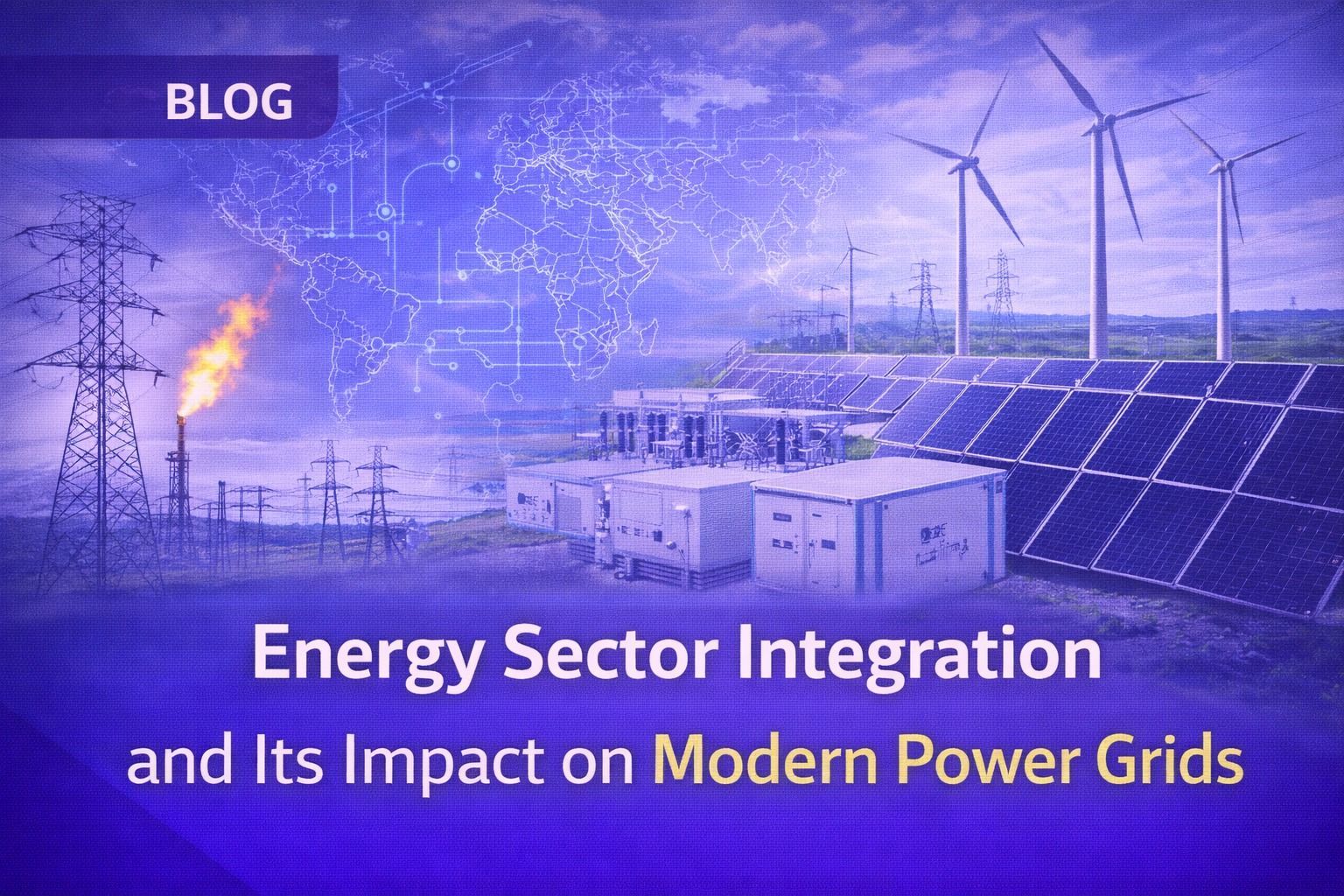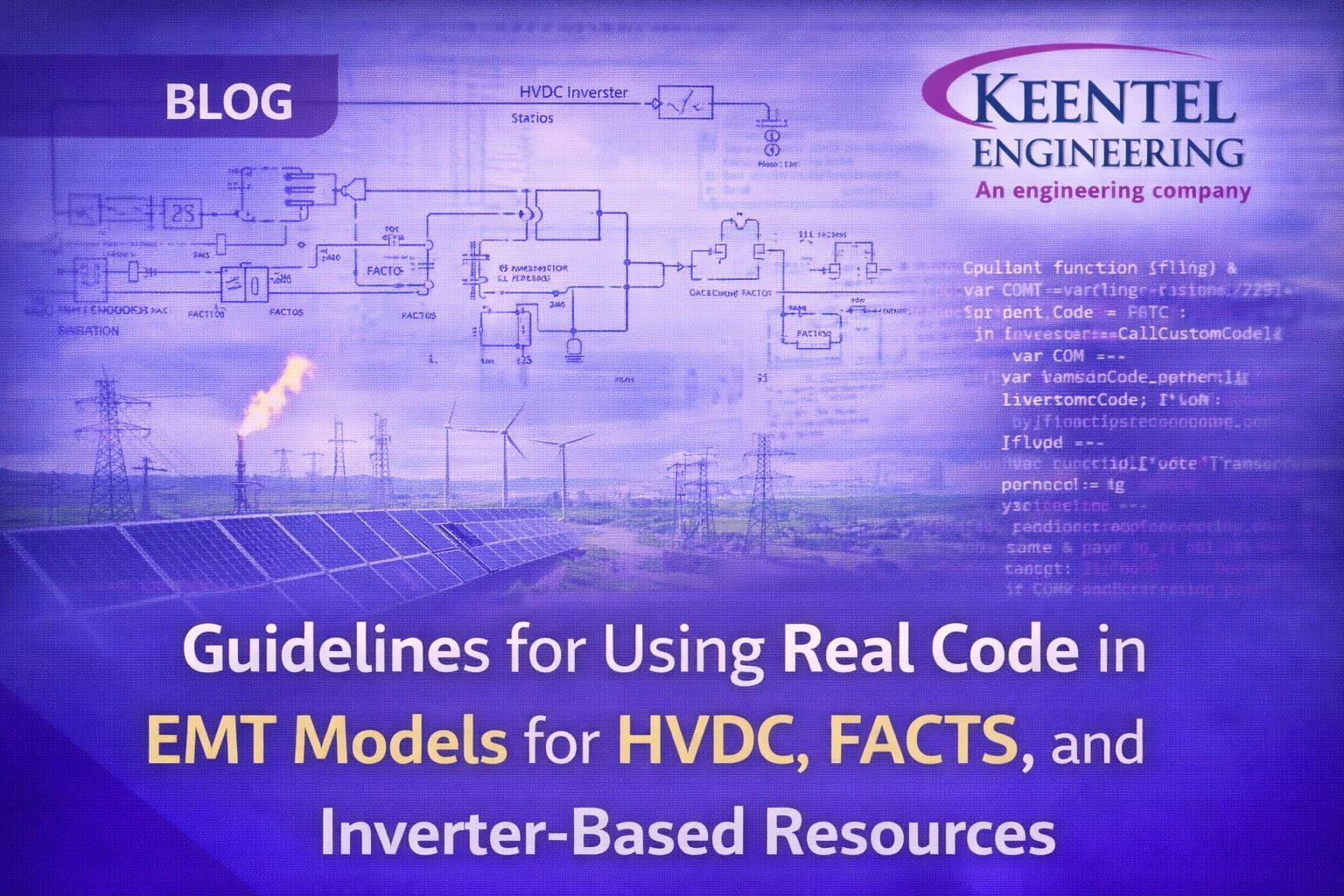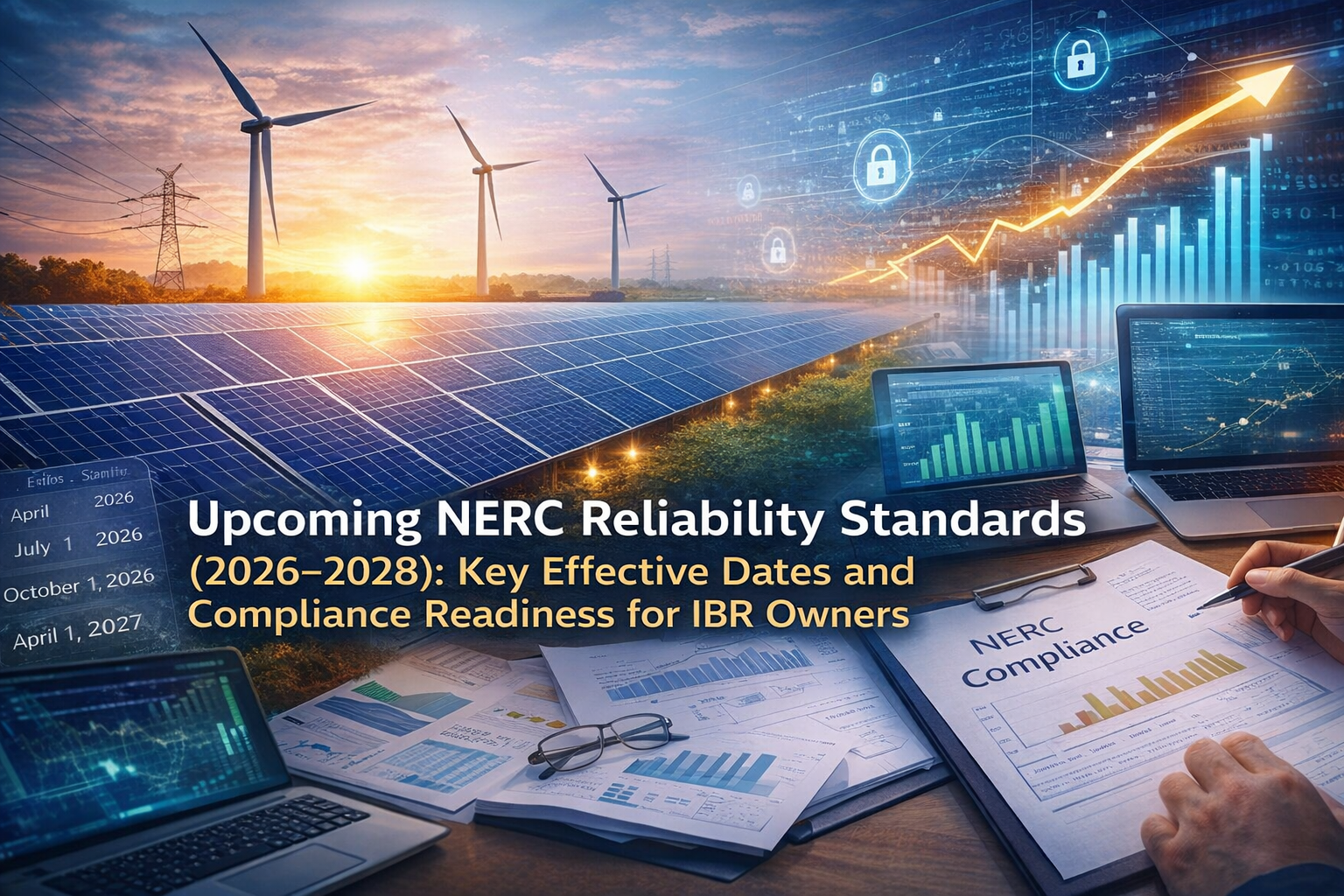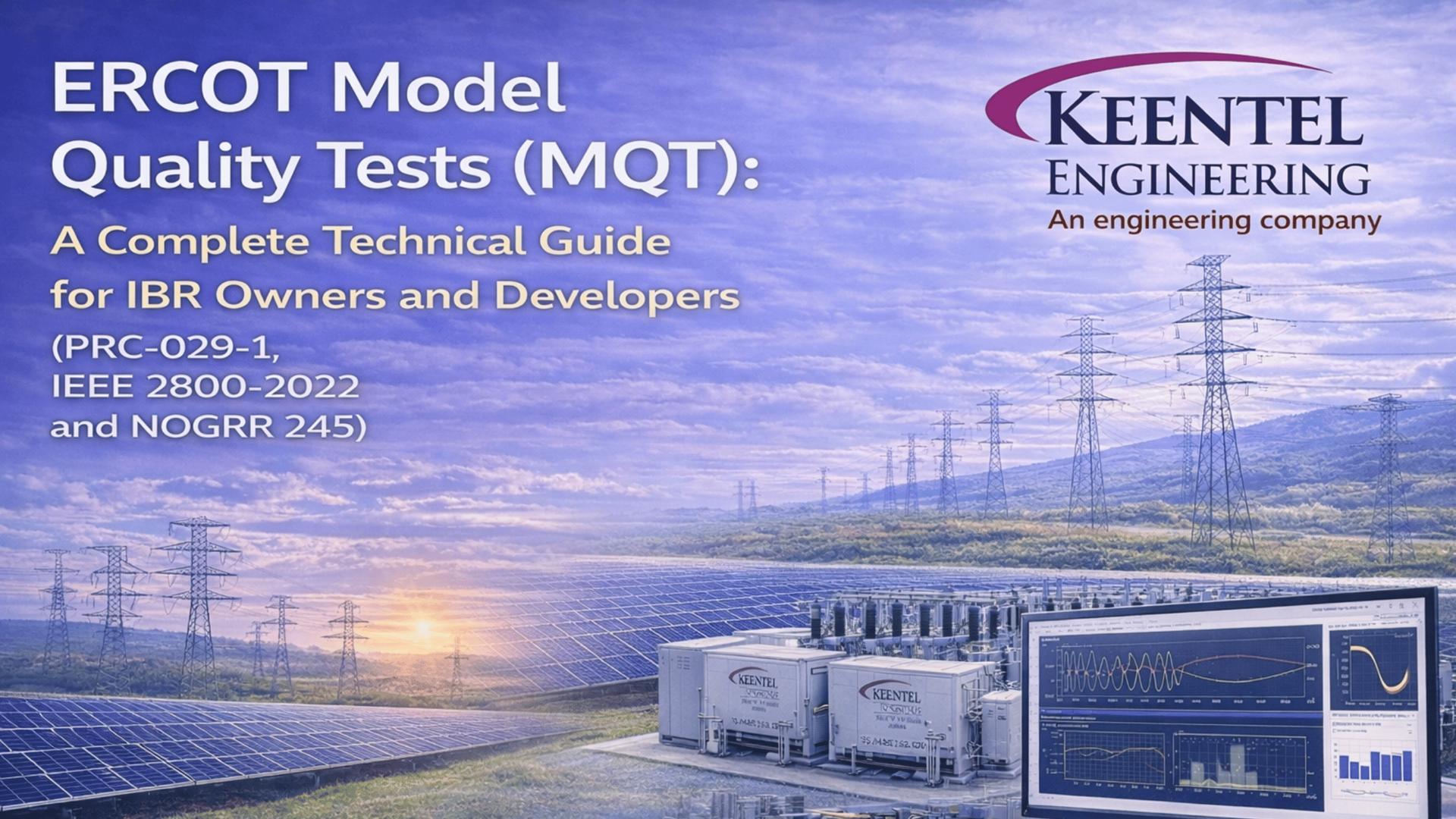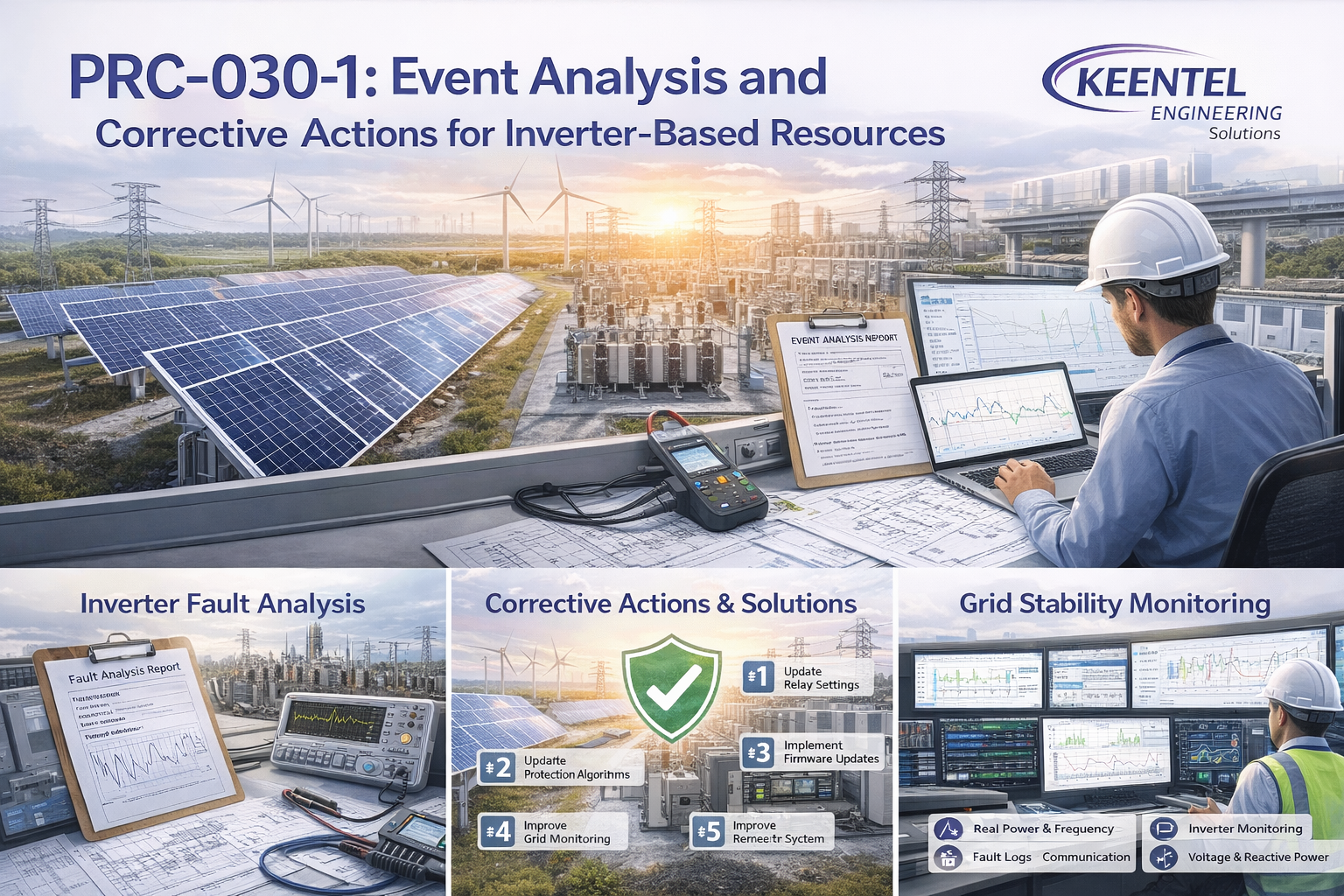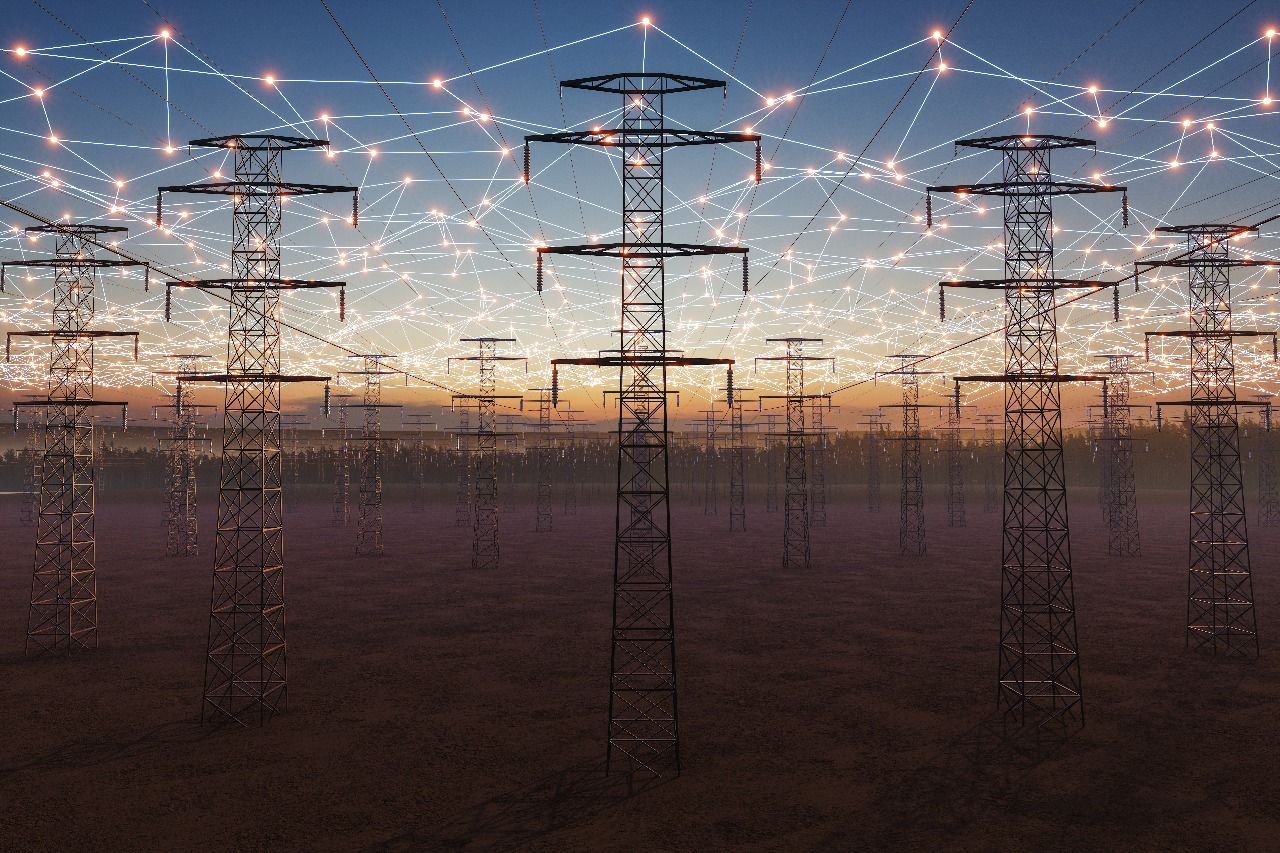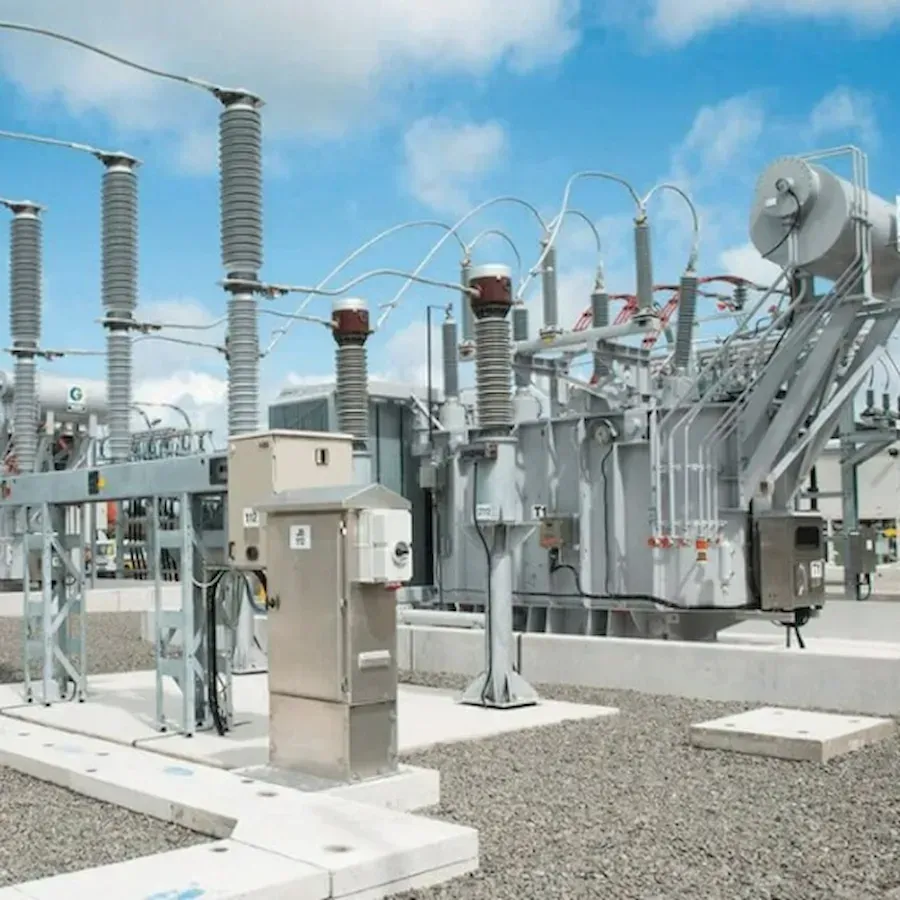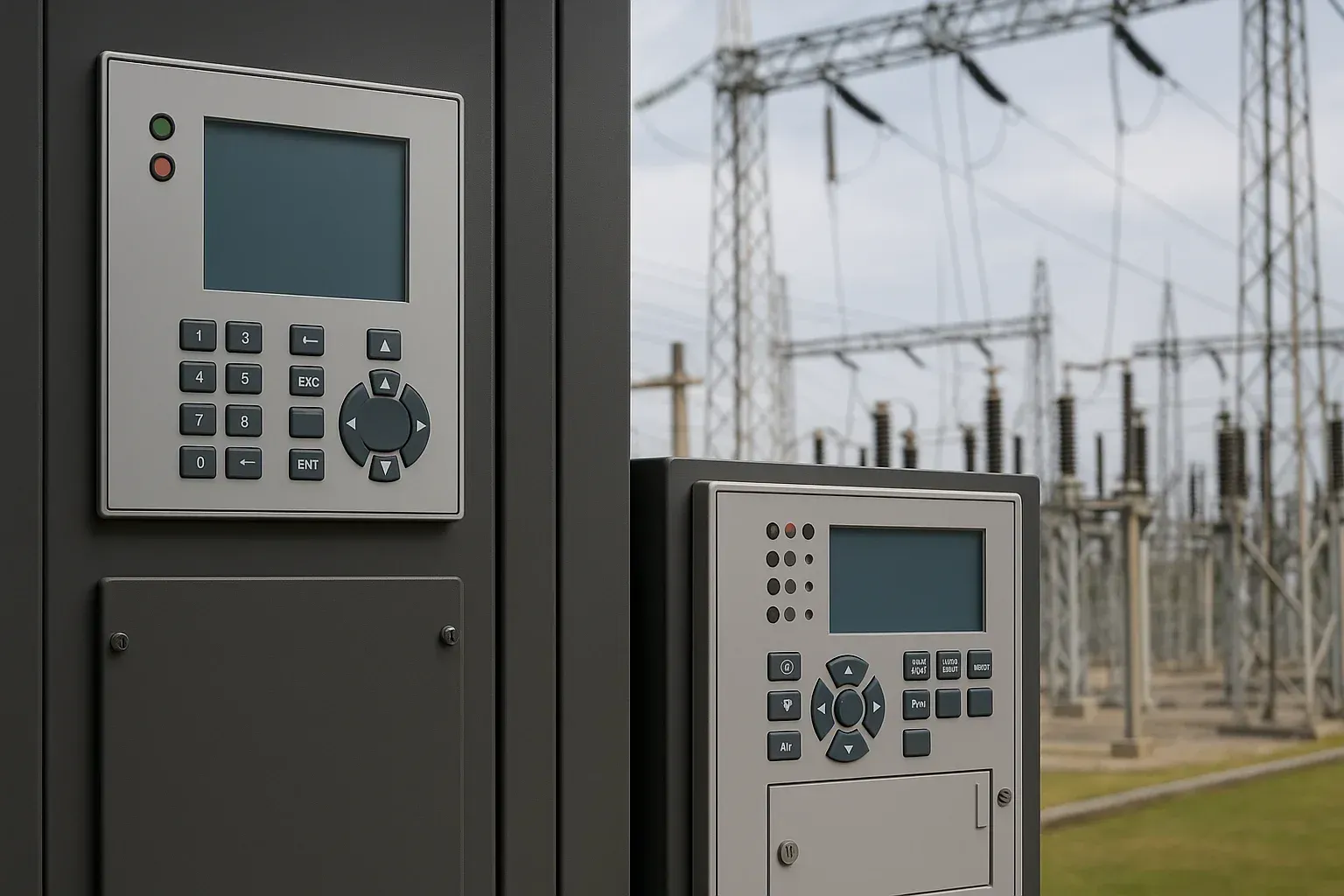A Coordinated Electric System Interconnection Review—the utility’s deep-dive on technical and cost impacts of your project.
Challenge: Frequent false tripping using conventional electromechanical relays
Solution: SEL-487E integration with multi-terminal differential protection and dynamic inrush restraint
Result: 90% reduction in false trips, saving over $250,000 in downtime
Evolution of Power System Design: Deterministic to Adaptive Models
August 27, 2025 | Blog
Introduction
The global power sector is undergoing a rapid transformation driven by renewable integration, digitalization, and evolving reliability requirements. IEEE Power & Energy Society (PES) has consistently provided technical reports and standards that guide engineers, utilities, and regulators in shaping the future grid. One such key resource is IEEE PES Technical Report TR126 – PSDP 110724, which provides a detailed exploration of Power System Design Practices (PSDP), examining challenges, innovations, and strategies that address both legacy and emerging grid issues.
This blog breaks down the major findings and recommendations of TR126, covering core topics such as system planning methodologies, integration of inverter-based resources (IBRs), advanced protection and control strategies, load modeling, resilience, and compliance frameworks. For engineers, operators, and compliance specialists, this report serves as both a technical foundation and a forward-looking guide.
1. Evolution of Power System Design Practices
Traditional power system design was rooted in synchronous machine dominance, deterministic load forecasts, and N-1 reliability planning. However, as highlighted in TR126, today’s design landscape has shifted toward probabilistic modeling, inverter-based generation, and dynamic operational uncertainties.
Drivers of change:
- Growth of renewable energy (solar, wind, distributed energy resources)
- Electrification of transportation and heating
- Climate resilience requirements
- Cyber-physical system integration
The report emphasizes that design practices must now balance operational flexibility with long-term reliability and compliance, moving from rigid planning to adaptive strategies.
Learn about:
dynamic simulation tools like PSSE, PSCAD, and RTDS
2. Grid Planning in a Renewable-Dominated Era
A key section of TR126 addresses the shift from deterministic to probabilistic planning models. Instead of planning only for peak load and contingency events, engineers must incorporate:
- Variable generation profiles (solar irradiance, wind speed variations)
- Demand uncertainty influenced by distributed generation and electric vehicles
- Extreme weather scenarios requiring resilience-driven planning
The report calls for expanded scenario-based analysis tools, including Monte Carlo simulations, production cost modeling, and high-fidelity EMT studies. This ensures that power systems are designed to withstand diverse operational realities.
3. Inverter-Based Resources and Grid Stability
One of the most pressing challenges in PSDP is integrating inverter-based resources (IBRs) such as wind, solar, and battery energy storage systems (BESS).
TR126 highlights:
- Grid-forming vs. grid-following inverters and their role in maintaining stability.
- Need for IBR dynamic models in planning and operational studies.
- The reduced system inertia problem, requiring synthetic inertia and fast frequency response mechanisms.
- Case studies demonstrating voltage ride-through and fault contribution issues.
This is especially critical for compliance with IEEE Std 2800-2022 and regional interconnection requirements (PJM, ERCOT, CAISO, SPP, WECC).
See our Substation Protection Coordination under high BESS Penetration
4. Protection System Design and Coordination
The report dedicates significant discussion to protection systems in a modernized grid:
- Adaptive protection schemes that respond dynamically to system topology changes.
- IEC 61850-based protection and automation, enabling faster communication and interoperability.
- Importance of protection coordination with inverter fault behavior, which differs significantly from synchronous machines.
- Arc-flash, reclosing, and breaker duty considerations in high-renewable systems.
This aligns with ongoing NERC PRC compliance requirements, including PRC-027 (coordination) and PRC-006 (underfrequency load shedding).
5. Modeling and Simulation Enhancements
Accurate system models underpin effective PSDP. TR126 stresses:
- Load modeling: Incorporating distributed generation, demand response, and electric vehicle charging impacts.
- Dynamic simulation tools: Use of PSSE, PSCAD, DigSILENT PowerFactory, MATLAB/Simulink, and RTDS for EMT studies.
- Hybrid modeling: Combining transmission-level and distribution-level analysis for integrated grid studies.
Figures within the report illustrate comparisons of simulation outcomes under EMT vs. phasor-domain analysis, showing how traditional methods may miss critical fast dynamics in high-IBR systems.
Need help with:
NERC PRC standards impact protection system design
6. Compliance and Regulatory Considerations
IEEE TR126 integrates technical practices with compliance frameworks:
- NERC Reliability Standards: TPL-001, PRC-002, PRC-019, and MOD standards are central to system design validation.
- Regional grid codes: (ERCOT DWG, WECC modeling, PJM interconnection rules) require transparent and validated system models.
- Interoperability standards: IEEE 1547 for DER interconnection, IEEE 2800 for transmission-connected IBRs, and IEC 61850 for communications.
The report stresses that compliance must not be treated as a box-checking exercise but rather as an integrated design philosophy.
7. Cybersecurity and Digitalization in PSDP
Digitalization is a double-edged sword—while enabling smarter grid operation, it also introduces vulnerabilities. TR126 discusses:
- Cybersecurity frameworks for protection and control systems.
- Digital twin applications in system design and testing.
- Role of AI/ML in predictive maintenance and anomaly detection.
The convergence of IT and OT (operational technology) in substations makes secure design practices a fundamental requirement.
8. Resilience and Climate Adaptation
Resilience is a central theme in TR126, particularly in response to increasing extreme weather events. The report suggests:
- Designing substations and transmission assets with climate resilience in mind.
- Undergrounding and hardening strategies for critical corridors.
- Use of microgrids and distributed energy resources for black start and islanding support.
- Probabilistic resilience metrics that account for recovery time, not just failure avoidance.
9. Case Studies and Practical Applications
The report includes case-based analysis demonstrating:
- Integration of 100% renewable microgrids and their stability challenges.
- Substation protection coordination under high penetration of BESS.
- A multi-region interconnection study comparing different reliability criteria across operators.
- Lessons learned from blackout investigations (e.g., 2003 North America, 2021 Texas freeze).
10. Future Outlook
IEEE TR126 concludes by emphasizing the need for adaptive, flexible, and data-driven system design practices. Emerging directions include:
- Wide-Area Monitoring and Control (WAMC) leveraging PMUs and synchrophasor data.
- Hardware-in-the-loop (HIL) testing for new inverter technologies.
- AI-driven probabilistic planning tools.
- Resilience-by-design philosophy integrated across planning, operations, and protection.
For engineers, utilities, and developers, the message is clear: system design must evolve in step with technological disruption, regulatory frameworks, and resilience imperatives.
Conclusions
IEEE PES Technical Report TR126 provides a comprehensive roadmap for modern power system design practices. By addressing IBR integration, protection system coordination, compliance, modeling, and resilience, it bridges the gap between traditional approaches and future grid requirements.
For organizations like Keentel Engineering, aligning services with these practices ensures regulatory compliance, technical excellence, and competitive advantage in renewable integration, substation design, and power system studies.
Explore our full suite of NERC Compliance Engineering Services to see how we can help your facility remain audit-ready, technically sound, and operationally reliable.
Frequently Asked Questions – EMT Analysis
1. What is the main focus of IEEE PES TR126?
It provides guidelines on evolving power system design practices in response to renewable integration, inverter-based resources, and compliance requirements.
2. Why is probabilistic planning emphasized in the report?
Because traditional deterministic planning cannot adequately address renewable variability, extreme weather, and demand uncertainties.
3. How do inverter-based resources affect system protection?
IBRs provide limited short-circuit current and exhibit different fault behaviors, requiring adaptive protection coordination.
4. What simulation tools are recommended in TR126?
PSSE, PSCAD/EMTDC, DigSILENT PowerFactory, MATLAB/Simulink, and RTDS are highlighted for dynamic and EMT studies.
5. How does TR126 address compliance with NERC standards?
It aligns PSDP with NERC reliability standards such as TPL, PRC, and MOD series, ensuring validated models and protection schemes.
6. What role do grid-forming inverters play in stability?
They provide synthetic inertia, frequency support, and black start capability, mitigating reduced inertia in renewable systems.
7. How does the report address load modeling challenges?
It recommends enhanced composite load models that incorporate DERs, EVs, and responsive demand.
8. What is the importance of IEC 61850 in protection systems?
IEC 61850 enables interoperable, adaptive, and faster communication for substation automation and protection schemes.
9. How does TR126 incorporate resilience in design?
Through probabilistic resilience metrics, microgrids, and hardening strategies for transmission and substation infrastructure.
10. Why is EMT simulation critical for IBRs?
Because EMT captures fast inverter dynamics and control interactions that traditional phasor-domain simulations may miss.
11. What are the cybersecurity considerations in PSDP?
Secure design of protection and control systems, anomaly detection, and digital twin security are highlighted.
12. How do NERC PRC standards impact protection design?
They require coordination, testing, and performance verification of protection systems under new system dynamics.
13. What are the challenges of integrating BESS in PSDP?
BESS adds complexity to short-circuit behavior, state-of-charge modeling, and protection coordination.
14. What planning tools are evolving due to TR126 recommendations?
Hybrid transmission-distribution models, probabilistic scenario analysis, and AI-driven forecasting tools.
15. How do extreme weather events influence system design?
They demand resilience-driven strategies, redundancy, and microgrid capabilities for recovery.
16. What role do PMUs play in future PSDP?
They enable wide-area monitoring, real-time control, and dynamic validation of system performance.
17. How does TR126 address DER interconnection?
By aligning with IEEE 1547 standards for interoperability and voltage/frequency ride-through requirements.
18. Why is model validation critical for compliance?
Because unvalidated or inaccurate models lead to unreliable studies and potential regulatory violations.
19. What is the significance of hardware-in-the-loop (HIL) testing?
HIL validates new inverter controls and ensures robust integration before field deployment.
20. How should utilities and engineers apply TR126 in practice?
By embedding its recommendations into system planning, protection design, and compliance programs
Master EMT Analysis with Keentel Engineering’s Advanced Operational Expertise
As inverter-based resources (IBRs) like solar, wind, and battery energy storage systems (BESS) become more dominant in power grids, electromagnetic transient (EMT) analysis is no longer optional — it’s foundational to ensuring grid stability, fault recovery, and protection reliability. Traditional phasor-domain tools (RMS) cannot fully capture fast switching, harmonics, and sub-cycle control dynamics of IBRs. That’s why utilities, ISOs, and developers increasingly rely on EMT modeling for operational planning, black-start procedures, and real-time system diagnostics.
Keentel Engineering supports operational teams and grid planners with end-to-end EMT solutions:
- Verified EMT modeling of IBRs, synchronous machines, HVDC, and FACTS
- Real-time simulation (HIL) and model validation using PSCAD and RTDS
- Hybrid EMT–RMS co-simulation for full-grid behavior analysis
- EMT integration for substation protection, RAS evaluation, and black-start
Explore how our expertise in
Power System Studies,
Substation Design Services, and
NERC Compliance Services helps future-proof operations and ensure audit-ready reliability.

About the Author:
Sonny Patel P.E. EC
IEEE Senior Member
In 1995, Sandip (Sonny) R. Patel earned his Electrical Engineering degree from the University of Illinois, specializing in Electrical Engineering . But degrees don’t build legacies—action does. For three decades, he’s been shaping the future of engineering, not just as a licensed Professional Engineer across multiple states (Florida, California, New York, West Virginia, and Minnesota), but as a doer. A builder. A leader. Not just an engineer. A Licensed Electrical Contractor in Florida with an Unlimited EC license. Not just an executive. The founder and CEO of KEENTEL LLC—where expertise meets execution. Three decades. Multiple states. Endless impact.
Services

Let's Discuss Your Project
Let's book a call to discuss your electrical engineering project that we can help you with.

About the Author:
Sonny Patel P.E. EC
IEEE Senior Member
In 1995, Sandip (Sonny) R. Patel earned his Electrical Engineering degree from the University of Illinois, specializing in Electrical Engineering . But degrees don’t build legacies—action does. For three decades, he’s been shaping the future of engineering, not just as a licensed Professional Engineer across multiple states (Florida, California, New York, West Virginia, and Minnesota), but as a doer. A builder. A leader. Not just an engineer. A Licensed Electrical Contractor in Florida with an Unlimited EC license. Not just an executive. The founder and CEO of KEENTEL LLC—where expertise meets execution. Three decades. Multiple states. Endless impact.
Leave a Comment
We will get back to you as soon as possible.
Please try again later.


